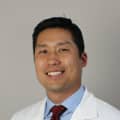Treatment protocols for sports hernia remain controversial. Some practitioners advise nonsurgical treatments such as rest, anti-inflammatory medications, and physical therapy.1American Academy of Orthopedic Surgeons and the American Orthopedic Society for Sports Medicine. Sports hernia (athletic pubalgia). OrthoInfo, September 2010. http://orthoinfo.aaos.org/topic.cfm?topic=A00573 . Accessed December 12, 2014. Others believe it can only be corrected with surgery.2Kemp S, Batt ME. The 'sports hernia': a common cause of groin pain. Phys Sportsmed. 1998 Jan; 25 (1): 36-44. doi: 10.3810/psm.1998.01.968.
In This Article:
Nonsurgical treatment
Physicians who advocate nonsurgical treatment options for sports hernia typically recommend a four-step care protocol, as follows:
- Rest. Athletes are required to take a break of 4 to 6 weeks from their regular sports and any other strenuous activities to give the injured tissue(s) time to heal on their own.1American Academy of Orthopedic Surgeons and the American Orthopedic Society for Sports Medicine. Sports hernia (athletic pubalgia). OrthoInfo, September 2010. http://orthoinfo.aaos.org/topic.cfm?topic=A00573 . Accessed December 12, 2014.
- Anti-inflammatory drugs. Patients may take anti-inflammatory pain medications such as ibuprofen (Motrin, Advil) or naproxen (Aleve) to help relieve pain and decreased inflammation of affected tissues. In some cases, oral steroids may be administered.
- Physical therapy. Following the initial rest period, the patient undergoes a physical therapy regimen that focuses on strengthening the abdominal muscles as well as stretching the lower abdominal muscles and leg muscles. Additional treatments may include dry-needling, therapeutic massage, and ultrasound therapy.
- Injections. There are multiple types of injections used to treat sports hernia, such as steroid injections, nerve blocks administered to the ilioinguinal and iliohypogastric nerves, or platelet rich plasma (PRP) injection. Any one of these options can be used to provide pain relief.
Surgical treatment for sports hernia
Physicians who recommend surgical treatment for sports hernia may adhere to one or more of the following protocols:
Sports hernia repair surgery. The most common surgical procedure for treating sports hernia involves repairing torn groin and lower-abdomen tissues with internal sutures, followed by a 6- to 8-week period of intensive physical rehabilitation to rebuild muscle strength and endurance after surgery.1American Academy of Orthopedic Surgeons and the American Orthopedic Society for Sports Medicine. Sports hernia (athletic pubalgia). OrthoInfo, September 2010. http://orthoinfo.aaos.org/topic.cfm?topic=A00573 . Accessed December 12, 2014. Some surgeries may involve the placement of a synthetic mesh in the groin area to help stabilize the injury.3Farber AJ, Wilckens JH. Sports hernia: diagnosis and therapeutic approach. J Am Acad Orthoped Surg. 2007. Aug; 15 (8) 507-14.
Surgery may be performed in a traditional open procedure with a single incision. Or it may be a laproscopy, in which a small camera is inserted into the body so the surgeon can view the abdomen and groin and perform the repair operation through multiple smaller incisions.
Additional surgeries. Some treatment-resistant cases of sports hernia require multiple surgeries. Some athletes may experience the same injury multiple times, requiring multiple surgeries to repair it.
Athletes diagnosed with sports hernia are encouraged to work closely with their physicians to find an appropriate treatment plan for their injury, and to seek second or even third opinions if necessary.
- 1 American Academy of Orthopedic Surgeons and the American Orthopedic Society for Sports Medicine. Sports hernia (athletic pubalgia). OrthoInfo, September 2010. http://orthoinfo.aaos.org/topic.cfm?topic=A00573 . Accessed December 12, 2014.
- 2 Kemp S, Batt ME. The 'sports hernia': a common cause of groin pain. Phys Sportsmed. 1998 Jan; 25 (1): 36-44. doi: 10.3810/psm.1998.01.968.
- 3 Farber AJ, Wilckens JH. Sports hernia: diagnosis and therapeutic approach. J Am Acad Orthoped Surg. 2007. Aug; 15 (8) 507-14.

